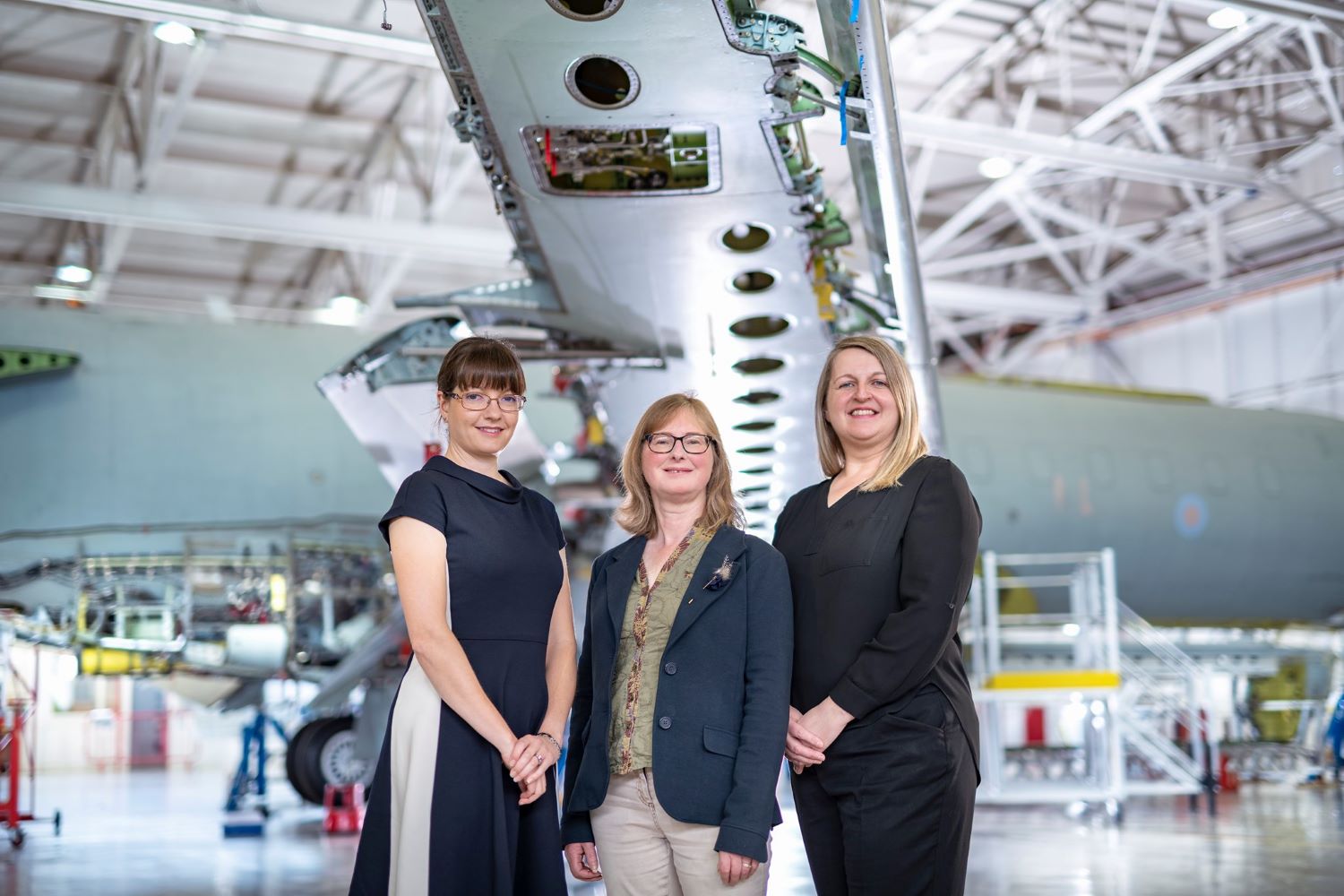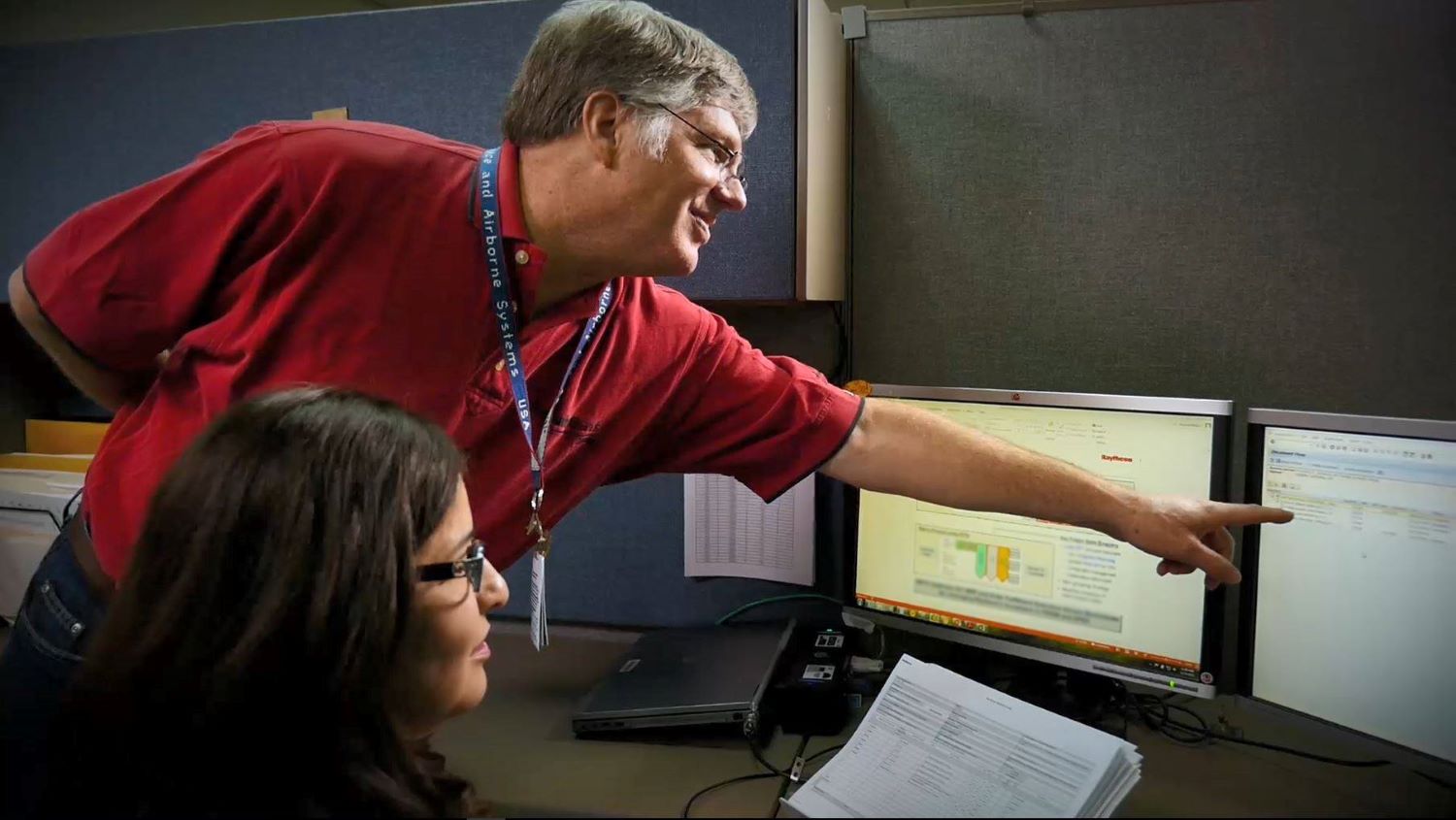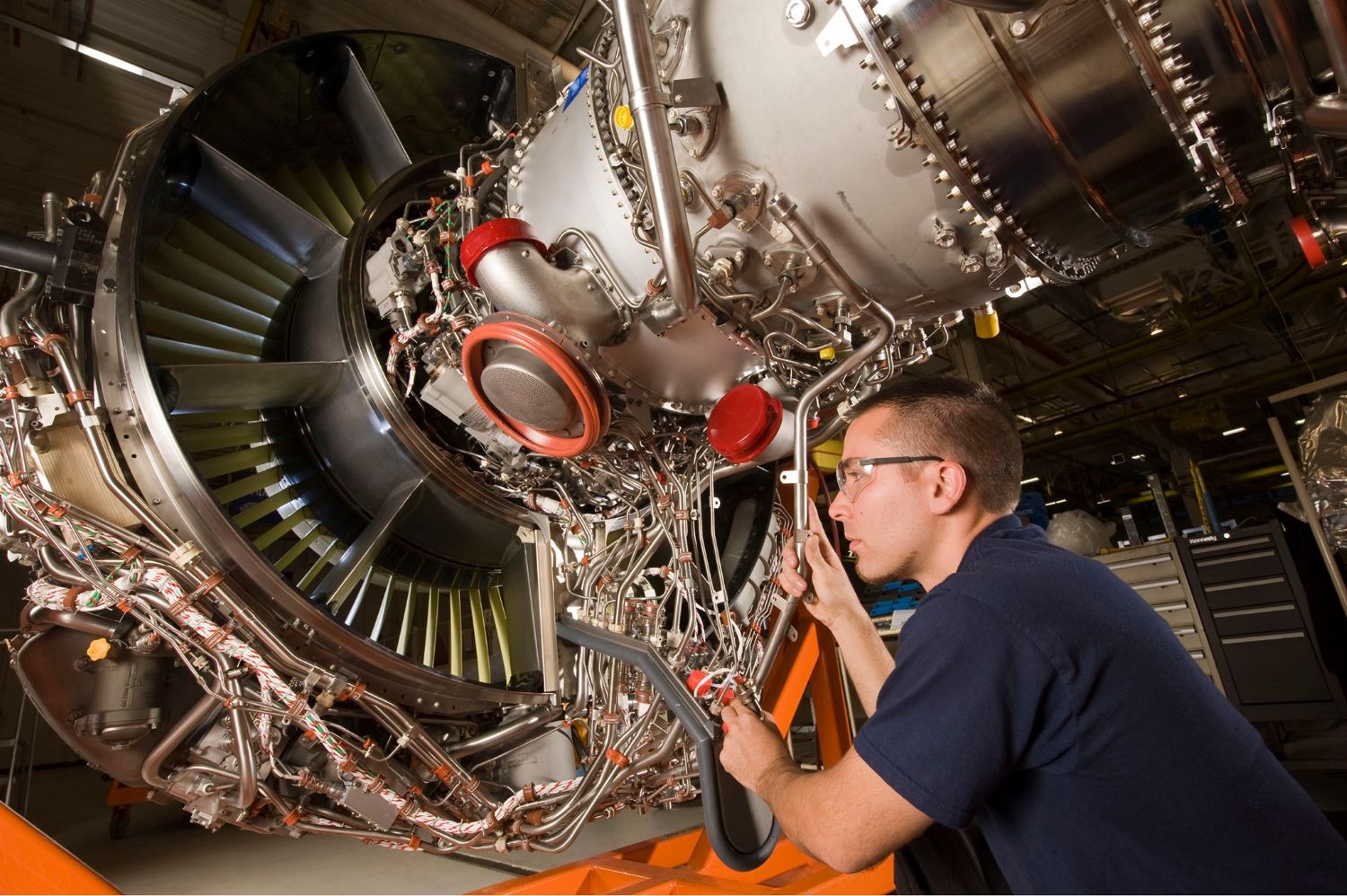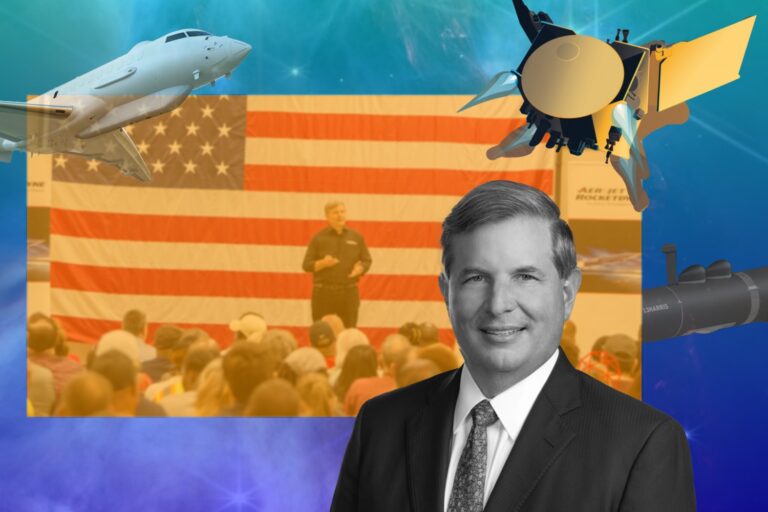Too Big to Fail: Raytheon – Behind the Curtain of The Top Dog in Wartime
Raytheon’s significance as a major defense contractor cannot be overstated. With a history spanning nearly a century, the company has played a pivotal role in shaping the defense landscape, both in the United States and on a global scale.
Not only is Raytheon a major employer, supporting thousands of direct and indirect jobs, but it also contributes significantly to the overall economy through its substantial revenue and tax payments. The company’s economic impact ripples through various sectors, bolstering local economies where its operations are based and driving technological advancements that have far-reaching applications beyond defense.
Given the company’s immense size, strategic importance, and reliance on government contracts, questions may arise about whether Raytheon is “too big to fail.” Let’s explore!
Raytheon Curveball – The Leap from Fridge Tech to War Tech
Raytheon’s roots trace back to 1922 when it was established as the American Appliance Company in Cambridge, Massachusetts, by Laurence K. Marshall, Charles G. Smith, and Vannevar Bush, all scientist-engineers.
Initially, the company’s primary focus was on refrigeration technology, but Mr. Van Bush made a significant shift towards electronics, a move that proved fortuitous as it led them to develop technology that became invaluable during World War II.
Their first product, the gaseous voltage regulator tube, allowed radio receivers to be directly plugged into the power grid, eliminating the need for costly and short-lived batteries. They named this innovative electron tube “Raytheon,” a term that roughly translates to “light from the Gods” in Old French Three.
In 1925, the company rebranded as Raytheon Manufacturing Company and achieved considerable commercial success by marketing its rectifier under the Raytheon brand name.
By the 1930s, Raytheon had established itself as the world’s largest vacuum tube manufacturing company, solidifying its position as a prominent player in the electronics industry.
The company continued to expand its business by diversifying into the manufacturing of transformers, powered equipment, and electronic auto parts. This diversification was facilitated by Raytheon’s acquisition of Acme-Delta Company, further enhancing its product portfolio and market presence.
Raytheon Technologies is driven by five distinctive core features that underscore its strategic prowess. These attributes, namely scale, focus, depth, diversity, and resilience, collectively shape the company’s impact on the industry landscape.

At the heart of Raytheon Technologies’ influence is its remarkable scale. Boasting a vast network of resources, capabilities, and expertise, the company leverages its considerable size to tackle complex challenges and seize opportunities with unparalleled efficiency.
A defining characteristic of Raytheon Technologies is its unwavering focus. The company’s strategic vision is finely tuned, enabling it to direct its energies towards areas where it can make the greatest impact. By aligning its efforts with a clear mission, Raytheon Technologies is able to efficiently allocate resources and develop innovative solutions that address critical needs within the aerospace and defense landscape.
Depth is another cornerstone of Raytheon Technologies’ strategic prowess. With a deep reservoir of technical knowledge, intellectual capital, and experience, the company possesses an exceptional ability to design and deliver cutting-edge products and solutions.
Diversity further distinguishes Raytheon Technologies’ influence. The company’s multifaceted portfolio spans a wide spectrum of technologies, services, and industries, mitigating risk and maximizing adaptability in a rapidly evolving landscape.
In the face of challenges and disruptions, Raytheon Technologies stands out for its remarkable resilience. With a steadfast commitment to adaptability and continuous improvement, the company can weather uncertainties and emerge stronger. This resilience is rooted in a culture of innovation, agility, and a willingness to learn from setbacks, ensuring that Raytheon Technologies remains at the forefront of change and disruption.
In 1938, Raytheon’s significance grew even further as Mr. Vannevar Bush, one of its co-founders, assumed the roles of Engineering Dean and Vice President of MIT, as well as becoming the nation’s foremost Science and Technology advisor to the government. His appointment by President Franklin D. Roosevelt to head the National Defense Research Committee came at a critical juncture as the clouds of World War II loomed on the horizon.
Leveraging Raytheon’s expertise in vacuum tubes, Bush recognized the immense potential of microwave research for radar applications. To harness this potential, he set up the Radiation Laboratory back at MIT.
When World War II commenced, the United States government awarded Raytheon a significant defense production contract. Thanks to Bush’s close relationship with the government as an advisor, Raytheon played a pivotal role in wartime efforts.
By the end of World War II in 1945, Raytheon’s contributions were groundbreaking. The company was responsible for 80 percent of all magnetrons manufactured, a critical component in radar systems. This achievement not only showcased Raytheon’s technical prowess but also revolutionized the relationship between academia and the defense industry.
As a result of collaborations like the Radiation Laboratory at MIT during World War II, engineering universities such as MIT underwent a transformation. They shifted from primarily serving private industry and pursuing academic truths to being actively enlisted in what could be seen as a “higher cause,” working closely with the U.S. government to support national defense efforts. This partnership between the government, universities, and industries created a dynamic and enduring cooperation known as the “government-university-industrial complex,” which continues to thrive in the present day.
Warfare Sidekick – Holding the Silver Bullet to Dominate the Battlefield
But after World War Il, Raytheon was still not one of the top dogs until they made two key discoveries. That would take them to the next era and launch them onwards and upwards.
The first breakthrough came when Raytheon scientist Percy Spencer discovered that magnetron tubes, originally used in radar systems during the war, could be utilized to rapidly heat food.
This revolutionary discovery led to the commercial invention of the microwave oven, a household appliance that would later become an integral part of the diets of US Army lower enlisted soldiers. The microwave oven’s convenience and efficiency made it a game-changer for home cooking, and its popularity contributed significantly to Raytheon’s commercial success.
The second pivotal discovery was the development of the first guidance system for a missile capable of intercepting a flying target. This breakthrough marked a major turning point in Raytheon’s history, propelling the company from a modest contractor in Massachusetts to one of the largest companies in the United States.
More remarkably, in 1950, Raytheon’s SAM-N-2 Lark missile achieved a significant milestone by becoming the first guided missile to successfully destroy a target aircraft in flight. However, the success of the Lark missile was not immediately profitable until the outbreak of the Korean War. The war led to significant contracts from the US government to develop the Sparrow and Hawk missiles.
During the 1960s, Raytheon experienced a significant boost in profits and global influence, primarily driven by the success of its Hawk missile system and its strategic focus on international markets.

By 1960, an impressive 40 percent of Raytheon’s profits were derived from the sale of the Hawk missile patents and the licensing of proprietary rights to foreign nations. This success solidified Raytheon’s position as a major player in the defense industry, and the company quickly rose to become the 11th largest defense contractor in the United States.
Amidst the backdrop of the Vietnam War, Raytheon continued to prosper. In 1968, during the height of the conflict, the company achieved $620 million in sales, of which $60 million was directly attributed to contracts with the U.S. government related to the Vietnam War.
One of the critical factors in Raytheon’s growth during this time was its ability to expand its market reach beyond the United States. The Hawk anti-air system, with its proven capabilities, caught the attention of several nations in the Middle East. As a result, Raytheon successfully sold the Hawk system to countries such as Saudi Arabia, Jordan, and Israel.
Despite being the 11th largest defense contractor in the country during the 1960s, Raytheon’s workforce comprised only 30,000 employees. This highlighted the company’s efficiency and capacity to deliver cutting-edge defense solutions with a relatively small workforce, further enhancing its reputation within the industry.
Raytheon’s strategic focus on the defense electronics business was further solidified through strategic acquisitions, allowing the company to consolidate its position as a major player in the industry. Notably, Raytheon acquired E-Systems from Chrysler and the Hughes Aircraft Company from GM, which included the General Dynamics missile business.
In parallel with its acquisitions, Raytheon made the strategic decision to divest from non-defense businesses, such as Amana refrigeration.
It is important to understand that massive defense technology companies like Raytheon require substantial capital to operate and innovate. Raytheon’s initial funding came from banks, with JPMorgan and Harris Trust of Chicago playing instrumental roles in financing the company during its early days. Charles Adams, an investment banker, served as the director of Raytheon between 1938 and 1942, contributing to the company’s financial stability and growth.
In 1950, the First National Bank of Boston and Liberty Mutual, finance companies, became representatives on Raytheon’s board of directors, further strengthening the company’s financial backing. However, it was in 1976 that Raytheon’s most significant success emerged with the development of the Patriot missile system.
The Patriot missile system was a revolutionary missile interceptor that garnered international attention, particularly after its reported success during the Persian Gulf War in 1991. The system’s capability to intercept and destroy enemy missiles made it a critical asset in modern warfare and enhanced Raytheon’s reputation as a leading defense technology provider.
Besides, the 2000s marked a transformative period for Raytheon as the company ventured into new technologies and expanded its global reach.
Leaning Hard on Technology – Raytheon Expanded Its Global Presence
One significant move during this era was the acquisition of companies like Sacros and BBN Technologies. Sacros, a robotic company, brought advanced automation and robotics expertise to Raytheon’s portfolio, enhancing the company’s capabilities in unmanned systems and autonomous technologies.
On the other hand, BBN Technologies specialized in cutting-edge fields like artificial intelligence and quantum computing, giving Raytheon a competitive edge in the development of advanced and next-generation technologies.
During the late 2000s and 2020, Raytheon conducted significant business with countries like Poland, Saudi Arabia, and Qatar, primarily focusing on the Patriot missile defense system…
In a strategic move to further strengthen its market position, Raytheon merged with United Technologies Corporation (UTC) to form Raytheon Technologies. This merger instantly elevated the newly formed entity to become the second-largest aerospace and defense company by sales, with a combined value exceeding $100 billion, trailing only behind Boeing.
A key aspect that sets Raytheon apart is its diverse portfolio of technologies with a common underlying theme of enterprise, retail electronics, and propulsion skills. This unique combination enables Raytheon to offer a comprehensive package that is challenging for competitors to match.
The company’s proficiency in multiple areas, including aerospace, planes, missiles, air traffic control, and satellite networks, allows it to provide integrated solutions that cater to a wide range of defense and aerospace needs.

Indeed, Raytheon Technologies’ ability to adapt and maintain its competitive edge is exemplified by its pivotal Research Center. Situated at the heart of the company’s strategic endeavors, this center plays a critical role in solidifying the company’s dominance within the market.
In this center, ingenious minds are reimagining air travel by harnessing electrical power for plane propulsion, thus curbing carbon emissions and propelling us toward an era of sustainable aviation. Another remarkable feat is the creation of trustworthy artificial intelligence, poised to guide military commanders, civil aviation authorities, and rapid-response teams facing time-sensitive decisions.
With a focus on optimization, they deploy heat exchangers to maintain the coolness of electronics and engines, revolutionizing the performance of commercial jets, military aircraft, radar systems, high-performance computers, and other pivotal technologies pivotal for the future of aerospace and defense.
Andreas Roelofs, the center’s director, encapsulates their mission, stating, “We do the hard stuff.” Yet, their endeavors extend beyond technological feats. Their innovations contribute to global betterment and heightened security, reflecting a commitment to improving the planet and fostering a safer world.
At the heart of this endeavor are around 300 dedicated professionals, primarily engineers, with a presence extending to a West Coast campus in Berkeley, California. Following the 2020 merger of United Technologies Corp. and the Raytheon Company, the center has honed its focus on aerospace and defense, channeling increased effort into harmonizing research with the precise requirements of the company’s four key businesses.
Trials and Triumphs: When the Fire Can’t Burn Them Out
Despite its remarkable success and technological advancements, Raytheon has faced its share of controversies over the years. In the 1980s, the company pleaded guilty to trafficking in classified Pentagon budget documents and paid fines of around $1 million. This incident raised concerns about the security of sensitive defense-related information and led to scrutiny of Raytheon’s practices.
In the 1990s, Raytheon was embroiled in another controversy when it was accused of attempting to bribe Brazilian officials to secure deals for their radar systems. Although the company denied responsibility, the incident cast a shadow over its business practices and raised questions about ethical conduct in international defense contracts.
Another significant controversy occurred in 2003 when Raytheon was fined $25 million for selling military communications equipment to Pakistan through its Canadian subsidiary, UTC Military Tech. The transaction violated the arms export control act and resulted in a guilty plea and substantial financial penalties.
Furthermore, in 2012, Raytheon faced legal repercussions once again when it pleaded guilty to violating the arms export control act and making false statements. This time, the company paid a hefty fine of $75 million, raising further concerns about its adherence to export regulations and the responsible handling of sensitive defense technologies.

The company’s involvement in politics has also been a subject of scrutiny. Raytheon and its subsidiary UTC have made significant contributions to federal political campaigns since the 2000s, raising questions about the influence of defense contractors on political decisions and policies.
One particularly notable association is with Lloyd Austin, who served as a former Raytheon board member and currently holds the position of Secretary of Defense. This raised concerns about potential conflicts of interest and the influence of the defense industry in shaping government contracts and policies.
Despite these controversies and associations, Raytheon continues to be a major player in the defense industry. The company remains a prominent recipient of defense contracts from the U.S. Department of Defense, receiving $26.1 billion in contracts in 2022, making it the second-largest recipient behind Lockheed Martin.
Bottom lines
Every successful company, including Raytheon, has faced controversies and challenges along its journey. However, what sets them apart is their determination and relentless effort to innovate and overcome obstacles.
Today, Raytheon stands as a shining example of how dedication to technological advancements and strategic decisions can lead to remarkable success in the defense industry. As a “too big to fail” entity, Raytheon’s continued success remains essential for safeguarding national security and upholding its vital role in the defense of nations worldwide.









